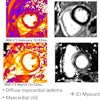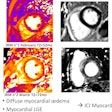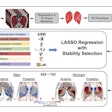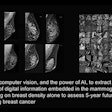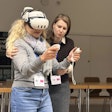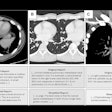
NEW YORK (Reuters Health), May 30 - The Frontal Lobe Epilepsy and Parasomnias (FLEP) scale helps clinicians to tell the difference between parasomnias, such as sleep-walking or night terrors, from nocturnal frontal lobe epilepsy (NFLE), Australian investigators report.
Misdiagnosis is common because characteristics of the two disorders are similar, including MRI findings and interictal EEG results. Therefore, specialists recommend video EEG or video EEG-polysomnography, but these services may be unavailable, or the events may not be captured during any given night.
Accurate diagnosis is important, because those with NFLE require prompt investigation and treatment, Dr. Samuel F. Berkovic, from the University of Melbourne in Victoria, and his associates indicate in their report in the May issue of the Archives of Neurology. Dr. Berkovic and his expert panel developed the FLEP scale, based on a review of the literature, to more easily distinguish between the conditions.
Characteristics captured by the FLEP scale include age at onset, duration of events, the number per night, and time of occurrence. It also asks about symptoms, such as auras, wandering, complex behaviors, or dystonic posturing or tonic limb extension. The patient and a witness will also be asked about variability in the behavior, patient's ability to recall the events, and if complex, intelligible speech takes place.
The authors explain that parasomnias usually last longer than NFLE, but rarely occur more than once or twice per night, while 20 or more NFLE episodes may cluster together. Patients with NFLE may exhibit bursts of agitated movement but rarely leave the bedroom, and often report auras and recall of the events. Furthermore, NFLE typically occurs during stage 2 sleep, while parasomnias take place during nonREM sleep.
Two members of Dr. Berkovic's team validated the FLEP scale by interviewing 62 patients with paroxysmal nocturnal events and a spouse, parent or other relative: 31 patients with NFLE and 31 with parasomnias.
Median FLEP scores were +5 for the NFLE group (range +1 to +11), and -4 for the parasomnias (range -12 to +3). For both interviewers, the sensitivity of the FLEP scores was 1.00, and specificities were 0.90 and 0.93.
The authors conclude that a score < 0 is probably due to a parasomnia, and that a score > +3 is indicative of NFLE. Because those with scores of +1 to +3 are likely to represent NFLE, these patients should undergo further investigation.
In conclusion, they write, "a rigorous clinical history (weighted according to the FLEP scale) may significantly reduce the need for tertiary referral and extensive investigation of paroxysmal nocturnal events."
Last Updated: 2006-05-29 12:00:22 -0400 (Reuters Health)
Arch Neurol 2006;63:705-709.
Related Reading
Drawing-induced epilepsy points to frontoparietal lobe involvement, March 24, 2006
Copyright © 2006 Reuters Limited. All rights reserved. Republication or redistribution of Reuters content, including by framing or similar means, is expressly prohibited without the prior written consent of Reuters. Reuters shall not be liable for any errors or delays in the content, or for any actions taken in reliance thereon. Reuters and the Reuters sphere logo are registered trademarks and trademarks of the Reuters group of companies around the world.
